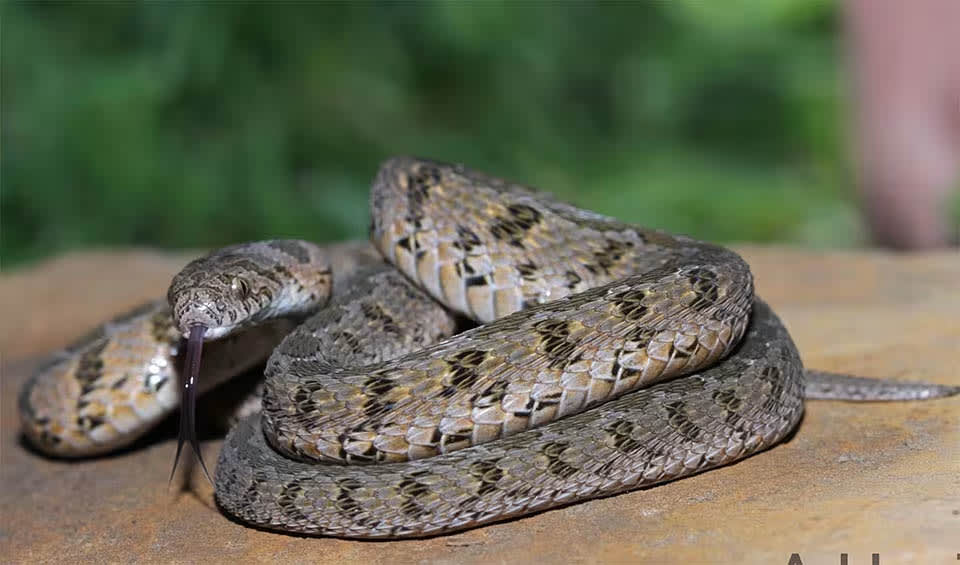Dasypeltis – Egg-eating snakes
Has a specialized diet consisting almost exclusively of bird eggs
One of the most remarkable features of Dasypeltis snakes is their ability to swallow eggs whole, even those that are much larger than their heads. Their incredibly flexible jaw structure allows them to open their mouths wide enough to accommodate the egg. Once the egg is inside, they use a series of specialized vertebrae that have bony projections on them, called hypapophyses, to crack the eggshell. These projections press against the eggshell, breaking it open, while the snake’s muscles help to squeeze out the contents of the egg, which they then swallow. The empty shell is regurgitated, making these snakes efficient and clean feeders.
Dasypeltis snakes are non-venomous and have a gentle disposition, which is beneficial because they don’t need to subdue their prey like other snakes do. Instead, their whole life revolves around finding and consuming bird eggs. They are primarily nocturnal, which helps them avoid predators and allows them to search for nests in relative safety. Their camouflage is excellent; they have a color pattern that blends in with the leaves and bark of the trees and bushes where they hunt, making them difficult to spot.
Another interesting aspect of these snakes is their mimicry of more dangerous species. Some Dasypeltis snakes can flatten their heads and bodies and produce a hissing sound to resemble venomous snakes like cobras when they feel threatened. This mimicry is a defense mechanism that helps deter predators, even though it is harmless.
Because of their specialized diet, these snakes play a unique role in their ecosystems. By feeding on bird eggs, they can help control bird populations, particularly in areas where certain bird species might become too numerous. However, their reliance on eggs also means that they are sensitive to changes in bird populations and habitat destruction, which can impact their survival.
Species in this genus
Common egg eater
Has the incredible ability to swallow eggs that are much larger than its own head


